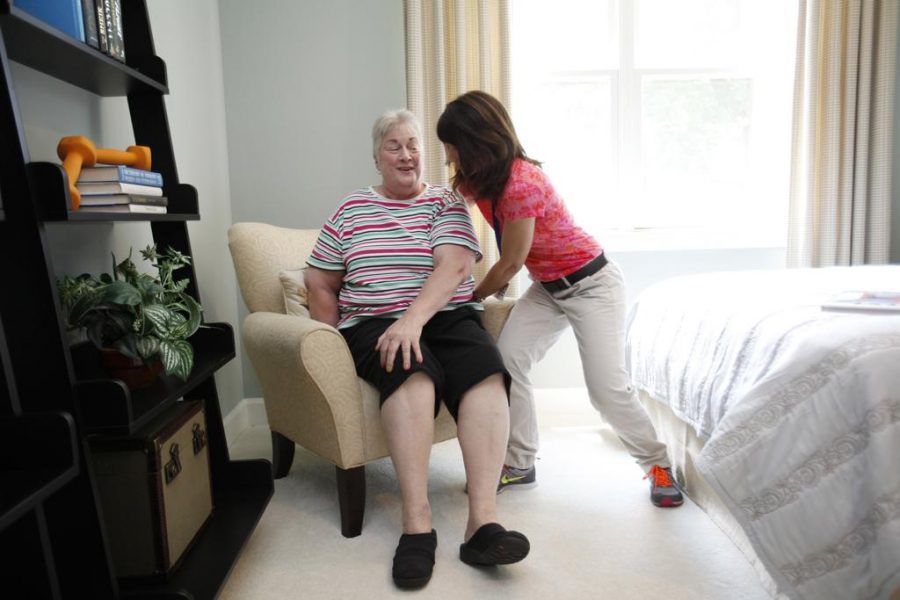Although retired, Edward Petrisek has not taken a day off in four years.
In 2011, Petrisek moved his parents, both in their 90s, into his third floor Pittsburgh walk-up, where he cared for his father until he passed away in 2014 and still cares for his now 98-year-old mother.
Petrisek’s work, combined with the work of informal caregivers for nearly 12 million people across America, is worth between $470 and $520 billion annually, according to an April report from the Stern Center for Evidence-Based Policy at Pitt.
The report makes recommendations for state and federal lawmakers to provide better support for unpaid family caregivers like Petrisek. According to the report, unpaid caregivers lack the programs needed to reimburse the emotional and financial toll that caregiving puts on them. The report said current systems in place, such as adult day care and Medicaid, are working, but policymakers need to expand and advertise programs more widely.
Petrisek, who applied for Veterans Affairs benefits for his father in 2012 and his mother in 2014, said that even knowing what financial help is out there can be a challenge.
“There is money out there,” Petrisek said. “The thing is, I had no clue that it was even out there. You just stumble across it,” Petrisek said.
There is no guidebook, you just have to network, he said, and then there are a lot of hoops to jump through and a lot of waiting.
According to the Institute of Medicine, unpaid caregivers provide an estimated 90 percent of long-term care for the elderly.
“People often want to provide this kind of care. They want to be there for their parents. Older adults want to stay in their homes,” Philip Rocco, author of the report and postdoctoral researcher in the Health Policy Institute, said.
While family caregivers may be preferable, they need services and support to deal with the day-to-day activities of caregiving, Rocco said.
Respite solutions, such as adult day care, are an important part of that support system. In these programs, seniors participate in physical therapy, receive medical monitoring, eat healthy meals and socialize.
According to the report, nearly 30 percent of family caregivers said respite care was their first or second choice to ease the burden of caretaking, indicating that the program works. However, only 11 percent participate in such a program due to lack of access.
“We do know that adult day care is very cost-effective when it comes down to ‘should I place?’ or ‘should we keep Mom or Dad at home and just find a respite solution during the day?’ That’s where adult day cares come into play,” said George Gesser, director of the Catholic Youth Association adult day care program, which both of Petrisek’s parents attended.
Although there are some programs to reimburse family caregivers — such as tax incentives, social security benefits and Medicaid — they are underutilized and far from comprehensive, Rocco said. In Oregon, for example, a tax credit used for qualified expenses to keep people out of nursing homes was terminated this year due to underutilization. On average, 40 people in the state claimed the credit annually.The report suggests that standardizing these programs across states as well as broadening eligibility criteria and increasing awareness of financial options would lead to more participation.
In addition to the financial burden, caregiving also takes a hefty emotional toll, Rocco said. According to the report, caregivers are at a higher risk for depression and anxiety.
For Petrisek, the hardest thing is feeling as if he is living in the Bill Murray movie, “Groundhog Day,” where Murray continuously relives Feb. 2.
“You know it’s going to be the same thing tomorrow, the same thing next week, the same thing next month … You have nothing to look forward to,” Petrisek said.
The report found that 125,948 caregivers utilized The National Family Caregiver Support Program, which funds counseling for caregivers. The report says the number of participants is “small compared to the potential number of clients.”
To address the emotional stresses of caretaking, Gesser runs a support line for family caregivers to discuss the latest developments in their loved one’s condition as well as their own medical issues. Nearly all of the 18 families at the center take advantage of this resource.
“The bond is there with all of the families and all of my staff as well,” Gesser said.
In the future, Pitt plans to investigate the consequences of increasing pay for formal caregivers. Using computational models, Rocco hopes to address how a pay increase will impact the number of caregivers and the quality of life for people receiving care.
For now, Rocco is working with policy makers, such as the Alzheimer’s Association, AARP and the Senate Finance Committee to combine and expand current programs to make coverage more comprehensive.
“We want people to see not just that this is a problem that we should be addressing, but also it’s not like one of those intractable problems that there’s no solution to,” Rocco said.


